Table of Contents
Overview – Upper Limb Joints
The upper limb joints allow for the extraordinary mobility and dexterity of the human arm and hand, enabling fine motor function, load-bearing, and environmental manipulation. This article reviews the anatomy, biomechanics, and stabilising ligaments of each joint in the upper limb — from the shoulder girdle to the wrist and hand — with a focus on clinically relevant features for final-year medical students.
Sternoclavicular Joint
- Type: Synovial saddle
- Bones:
- Manubrium of sternum
- Medial end of clavicle
- Features:
- Only joint attaching upper limb to axial skeleton
- Contains an articular disc (fibrocartilage) for congruence
- Ligaments:
- Sternoclavicular ligament
- Interclavicular ligament
- Costoclavicular ligament (also origin of subclavius muscle)
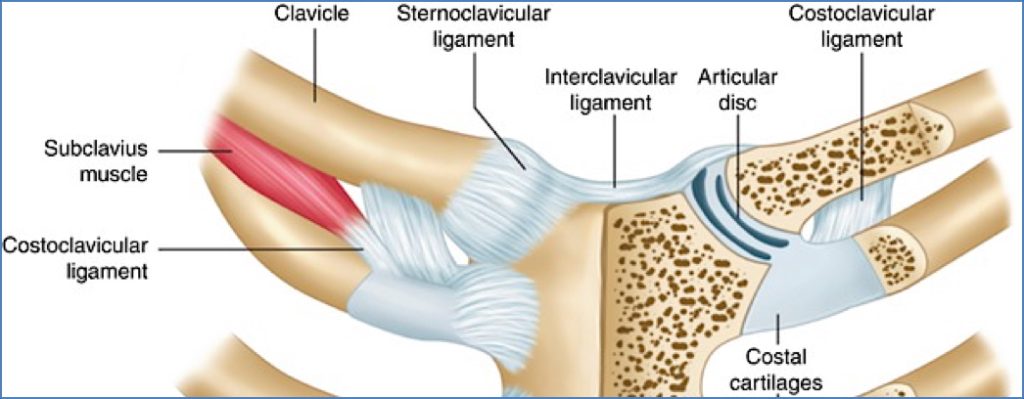

Acromioclavicular Joint
- Type: Synovial planar
- Bones:
- Acromion of scapula
- Lateral end of clavicle
- Features:
- Contains an articular disc for congruence
- Ligaments:
- Acromioclavicular ligament
- Coracoacromial ligament
- Coracoclavicular ligament
- Conoid part
- Trapezoid part
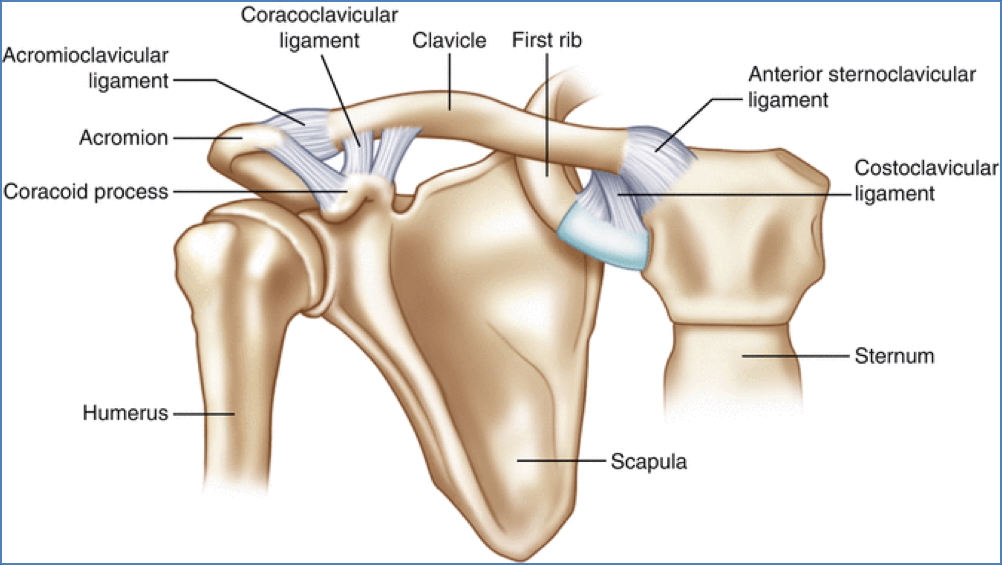

Glenohumeral Joint
- Type: Synovial ball-and-socket
- Bones:
- Head of humerus
- Glenoid fossa of scapula
- Features:
- Highly mobile → low intrinsic stability
- Glenoid labrum deepens socket
- Subacromial (subdeltoid) bursa cushions joint
- Loose synovial capsule
- Synovial sheath encloses long head of biceps tendon
- Ligaments:
- Glenohumeral ligaments
- Coracohumeral ligament
- Transverse humeral ligament
- Bridges intertubercular groove for biceps tendon
- Fibrous capsule (fused with rotator cuff for dynamic stability)


Elbow Joint
Humeroulnar Joint
- Type: Synovial hinge
- Bones:
- Trochlea of humerus
- Trochlear notch of ulna
- Features:
- Uniaxial: flexion & extension
- Very stable → strong bony congruence
- Ligaments:
- Ulnar collateral ligament
- Radial collateral ligament
- Annular ligament (also supports radioulnar joint)


Radioulnar Joints
Proximal Radioulnar Joint
- Type: Synovial pivot
- Bones:
- Radial head
- Radial notch of ulna
- Features:
- Uniaxial: pronation & supination
- Ligaments:
- Annular ligament


Distal Radioulnar Joint
- Type: Synovial pivot + articular disc
- Bones:
- Distal radius
- Distal ulna
- Features:
- Uniaxial: pronation & supination
- Ligaments:
- Dorsal radioulnar ligament
- Volar radioulnar ligament


Wrist Joint (Radiocarpal Joint)
- Type: Synovial condyloid
- Bones:
- Distal radius
- Scaphoid, lunate, triquetral (proximal carpal bones)
- Features:
- Biaxial: flexion/extension + abduction/adduction
- Enables circumduction
- Ligaments:
- Palmar radiocarpal ligament
- Dorsal radiocarpal ligament
- Flexor retinaculum (transverse carpal ligament) → forms roof of carpal tunnel
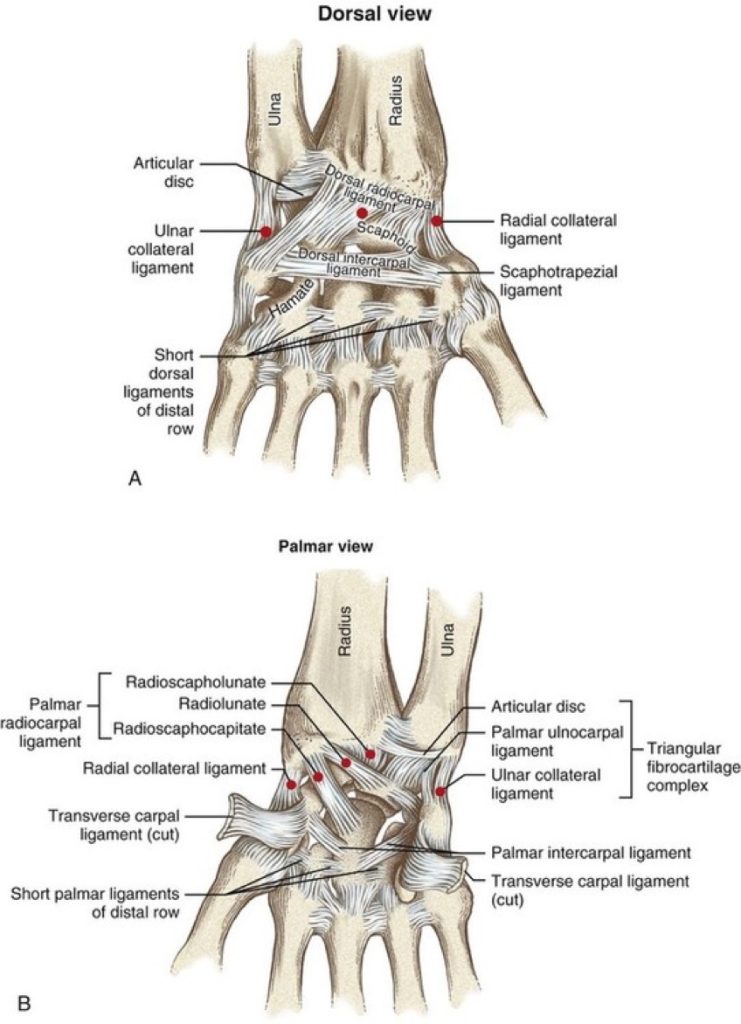

Intercarpal Joints
- Type: Synovial planar
- Bones:
- All adjacent carpal bones: trapezium, trapezoid, capitate, hamate, pisiform, triquetral, lunate, scaphoid
- Ligaments:
- Palmar intercarpal ligaments
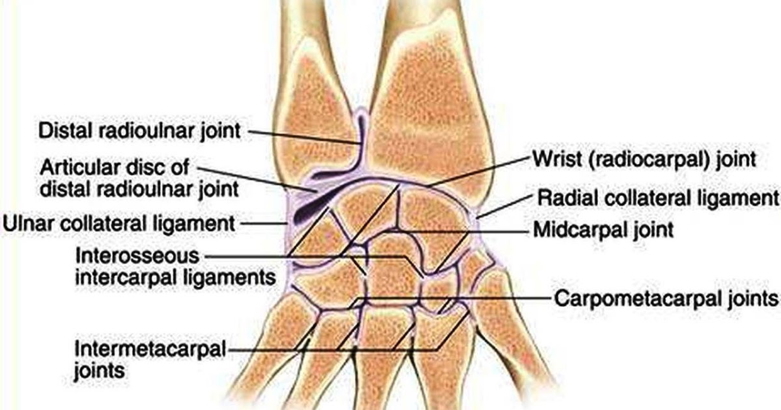

Carpometacarpal (CMC) Joints
Thumb (CMC Joint 1)
- Type: Synovial saddle
- Bones:
- Trapezium
- 1st metacarpal
- Features:
- Biaxial: flexion/extension + abduction/adduction
- Enables opposition and circumduction
Digits 2–5
- Type: Synovial planar
- Bones:
- Distal row of carpal bones: trapezoid, capitate, hamate
- Metacarpals 2–5
- Ligaments:
- Carpometacarpal ligaments
Metacarpophalangeal Joints (MCPs) – “Knuckles”
- Type: Synovial condyloid
- Bones:
- Metacarpals 1–5
- Proximal phalanges 1–5
- Features:
- Biaxial: flexion/extension + abduction/adduction
- Allows circumduction
- Ligaments:
- Collateral ligaments
- Transverse metacarpal ligament
- Joint capsules
Interphalangeal Joints (PIP & DIP)
- Type: Synovial hinge
- Bones:
- Adjacent phalanges (proximal, middle, distal)
- Features:
- Uniaxial: flexion/extension only
- Ligaments:
- Collateral ligaments
- Joint capsules
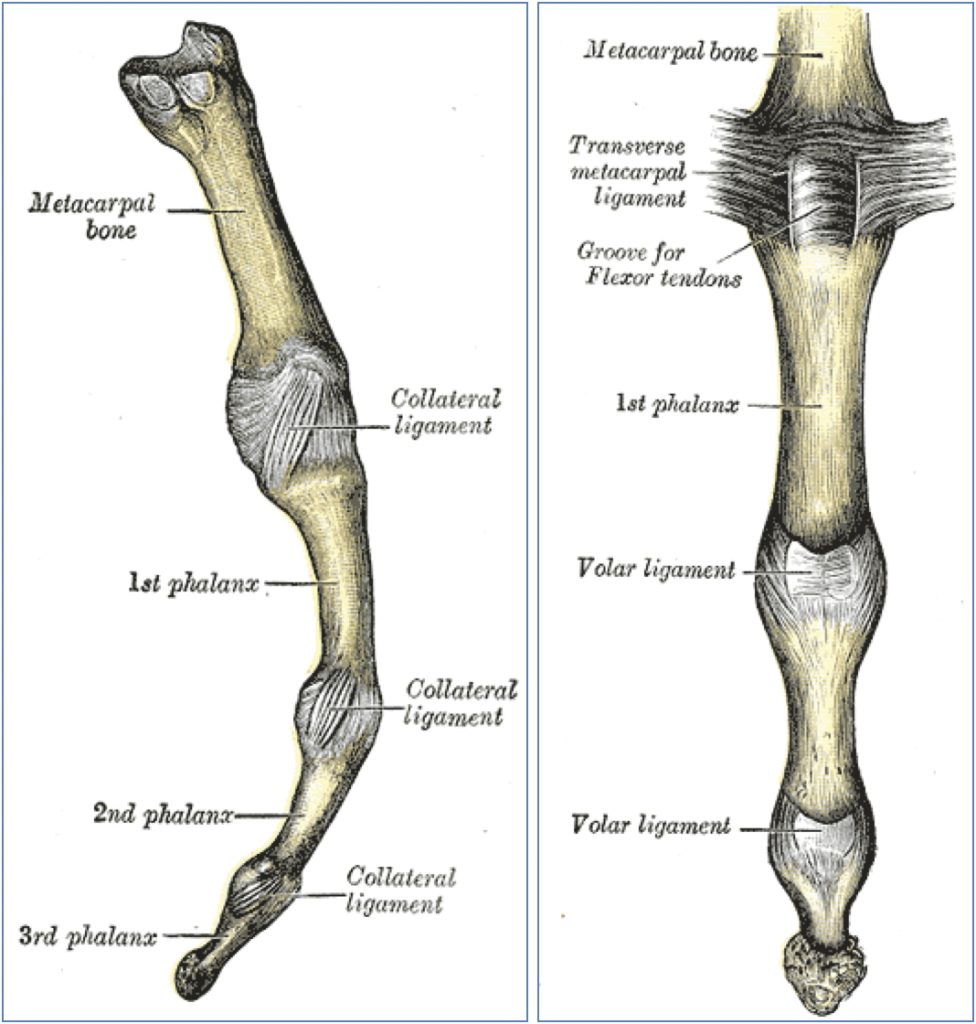

Summary – Upper Limb Joints
The upper limb joints provide a continuum of motion and flexibility from the clavicle to the fingertips. While the shoulder sacrifices stability for mobility, the elbow and wrist offer precision through hinge and condyloid mechanics. An understanding of each joint’s anatomy, ligamentous support, and biomechanical role is fundamental for safe clinical assessment and intervention. For a broader context, see our Musculoskeletal Overview page.